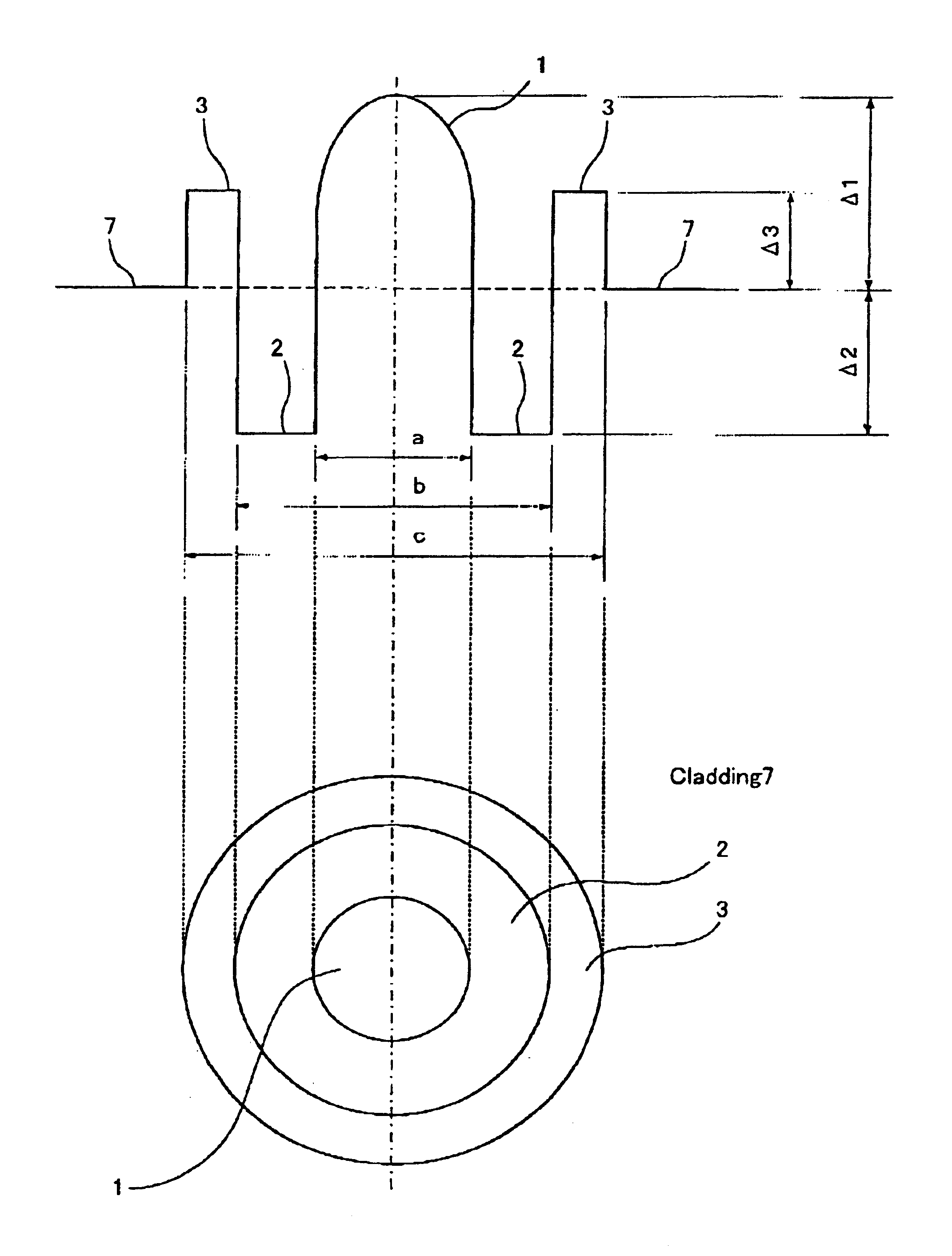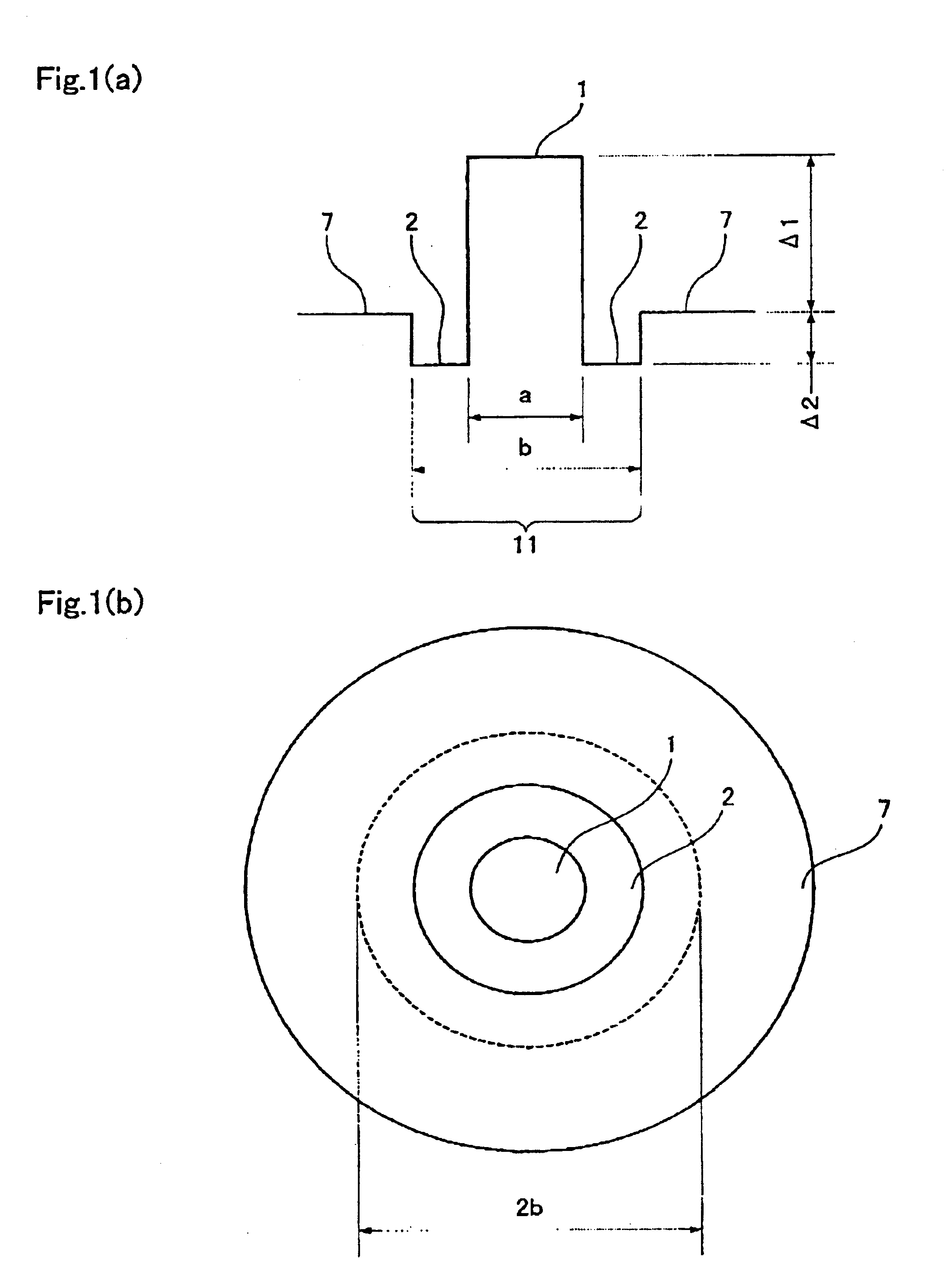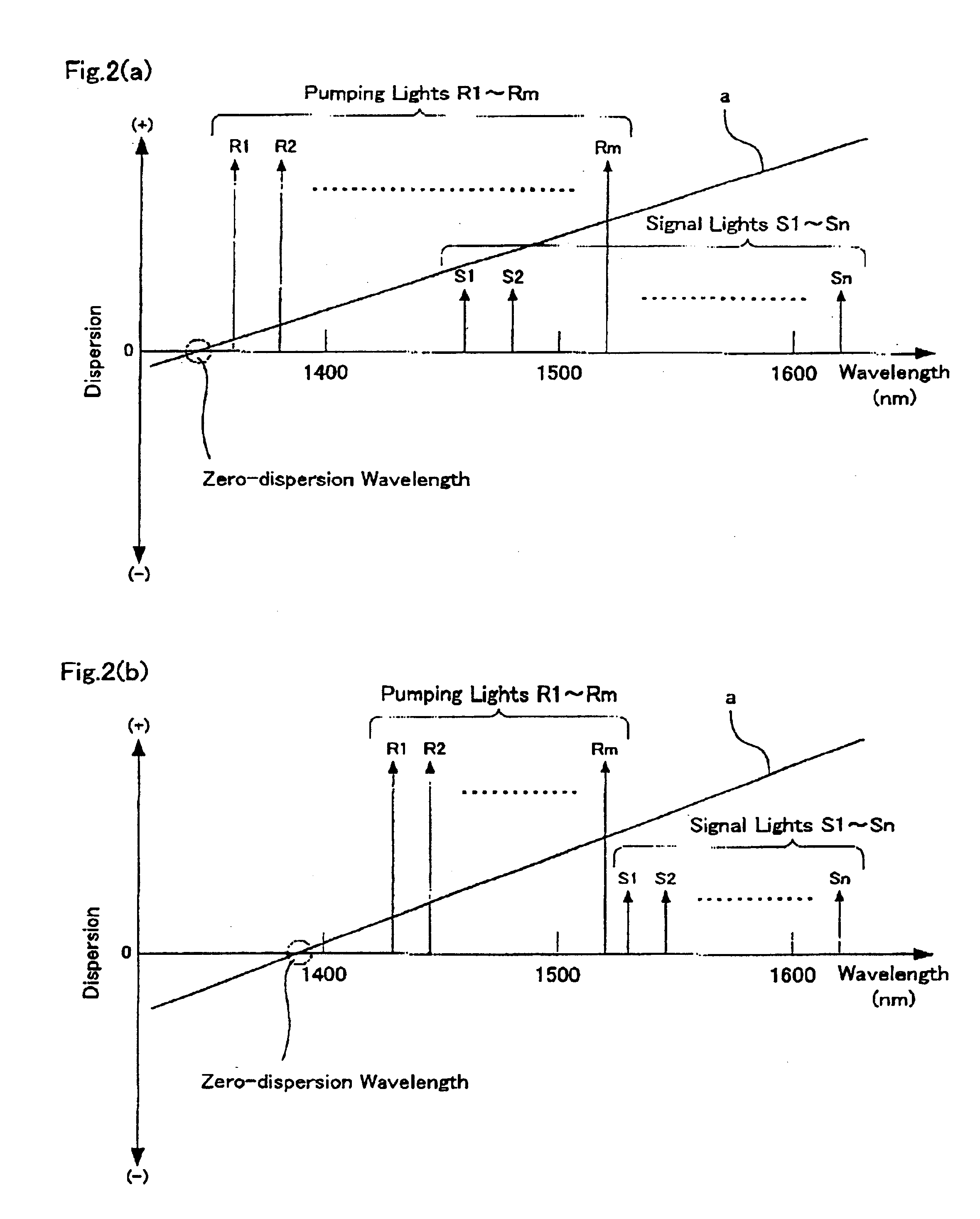Optical fiber and optical transmission line and optical communication system including such optical fiber
a technology of optical transmission line and optical fiber, which is applied in the direction of cladded optical fibre, instruments, optical elements, etc., can solve the problems of reducing the dispersion slope nz-dsf subject to limitations, limiting the wavelength band of pumping light for raman amplification, and almost unworkable in the s-band. , to achieve the effect of increasing the fwm generation efficiency, reducing the intensity of pumping light absorbed, and allowing
- Summary
- Abstract
- Description
- Claims
- Application Information
AI Technical Summary
Benefits of technology
Problems solved by technology
Method used
Image
Examples
embodiment 1
[Embodiment 1]
FIG. 1(a) shows a refractive index profile and FIG. 1(b) shows a cross-section of an optical fiber according to the first embodiment of the present invention. The refractive index profile in FIG. 1(a) features to be relatively simple and easy to design and control, compared to the other profiles.
Optical fiber of the first embodiment comprises of a core 11 at the center and a cladding 7 surrounding the core 11. In addition, the core has at least two layers with a first layer 1 at the center and a second layer 2 surrounding the first layer 1; the first layer 1 has a relative refractive index difference Δ1 of not less than 0.6% and not more than 1.6% with the cladding 7; the second layer has a relative refractive index difference Δ2 of negative value with the cladding 7; a diameter of the first layer 1 is shown as “a” and a diameter of the second layer 2 is shown as “b”.
The present patent specification defines the above relative refractive index differences (Δ1, Δ2, Δn) i...
first embodiment
The first embodiment allows a resultant optical transmission system with an average dispersion of not less than −10 ps / nm / km and not more than 1.0 ps / nm / km in a predetermined wavelength band of 1460 to 1625 nm, where the band may be partial or throughout between both wavelengths.
In addition to the above case with an optical fiber and an optical transmission system connected to a Raman amplified WDM transmission system, an optical fiber and an optical transmission system according to the first embodiment can be applicable for a WDM transmission system with other than Raman amplifier, for instance, one with EDFA (Erbium Doped Fiber Amplifier).
embodiment 2
[Embodiment 2]
An optical fiber in a second embodiment has a zero dispersion wavelength of 1350 nm or shorter, and makes it possible to suppress the FWM and the cumulative dispersion over a broad wavelength band of 1400 to 1700 nm. The conventional reduced dispersion slope NZ-DSF proposed until now makes it possible to realize a signal transmission over the S, C and L-bands (1460-1625 nm). The optical fiber according to the second embodiment has a dispersion “D” of not less than 2 and not more than 8 ps / nm / km (2≦D≦8 ps / nm / km) even in the longer wavelengths of U-band (1625-1675 nm) and the shorter wavelengths of the E-band (1365-1700 nm), along with the referenced three bands, suppressing the FWM generation and the cumulative dispersion.
In the case when optical fibers in the second embodiment are applied to a transmission line, a distributed Raman amplifier, and a discrete Raman amplifier applied to at least one of the S, C and L-bands, can be combined to compensate the transmission l...
PUM
 Login to View More
Login to View More Abstract
Description
Claims
Application Information
 Login to View More
Login to View More - R&D
- Intellectual Property
- Life Sciences
- Materials
- Tech Scout
- Unparalleled Data Quality
- Higher Quality Content
- 60% Fewer Hallucinations
Browse by: Latest US Patents, China's latest patents, Technical Efficacy Thesaurus, Application Domain, Technology Topic, Popular Technical Reports.
© 2025 PatSnap. All rights reserved.Legal|Privacy policy|Modern Slavery Act Transparency Statement|Sitemap|About US| Contact US: help@patsnap.com



